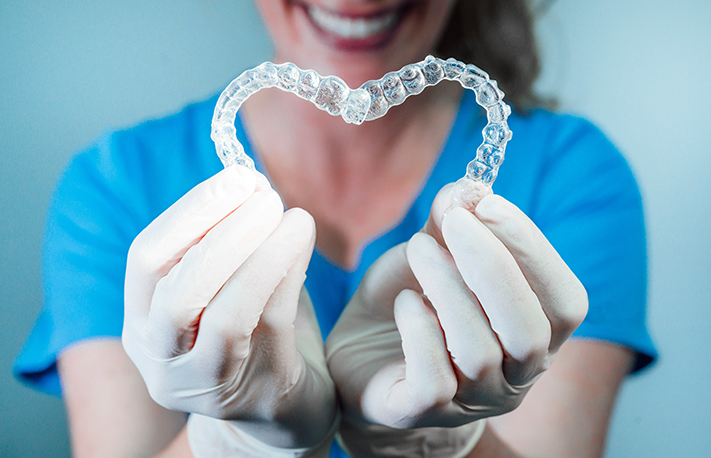 S2K Commerce - Products Dropdown
S2K Commerce - Products Dropdown
 Web Content Viewer - Blog
Web Content Viewer - Blog
6 Ways to Get More Out of Your Marketing Budget

As 2023 rounds the corner toward the end of the year, you may be starting to plan your marketing strategy for 2024 and beyond. Here are six ways you can make more from every dollar you allocate to your marketing budget.
1. Don’t be reactionary
Don’t “buy” a marketing solution without doing your homework first! It’s tempting to start throwing money at a problem when you see decline in both production and new patients. Not all marketing platforms are the same, and only a few meet the unique demands of a dental practice. Schedule time to sit through demonstrations and consider appointing capable support staff to join.
2. Know and understand your target market
Definition of Target Market: A group of people that have been identified as the most likely potential customer for a product or service because of shared characteristics such as age, income, and lifestyle.
- Define your ideal patient.
- Profile your ideal patient.
- Research your competition to learn about their targets.
If you select the wrong target market, your marketing campaigns, although they may be great, will have low conversion rates and negligible ROI. Keep in mind, different generations respond differently to varying communication mediums.
3. Know what each patient is worth!
How many new patients (NP) did you attract in 2023? What portion of revenues can be attributed to new patient production (NPP)? Here’s an easy formula: 100,000 in NPP / 100 NP = $1,000 per new patient.
Dig deeper. Which patients are worth more than the average? Which patients have been at your practice the longest? Their lifetime value is something to replicate. Also, look at your referral patterns. Who brings in new business for you as an ambassador for your practice? Find ways to identify similar patients and incentivize referral activity.
Every dental practice is different, with its own target demographic, geographic reach, and potential profitability. If you run a small general dental practice in a rural community, you can’t compare yourself to the multispecialty practice in the big city. This seems obvious, and yet dentists are often guilty of sharing stories with their friends without really understanding the true comparison metrics.
Focus on key metrics such as patient acquisition, retention, attrition, and both new-patient and existing-patient revenues. Prioritize turning your existing patient base into a funnel through which referrals can flow. Look at your month-over-month numbers and try to improve on them repeatedly. The only practice to beat is your own.
4. Be realistic about your budget
Your budget isn’t just money; it’s also time. How much time can you devote to marketing, campaign tracking, and analysis? Some of your marketing spend may need to be spent on a specialist who can handle the specifics.
Advertising traditionally costs the most, works the fastest, and takes the least amount of time. However, it can also be a scattershot with low conversion rates due to its impersonal and untargeted nature. Traditional ad spend has dropped and is being replaced with digital marketing.
Digital marketing is “permission-based,” and operates off data you’ve collected from patients or potential patients or acquired from third parties who obtained permission for data to be used in marketing. Digital has a lower cost than traditional advertising and higher conversion rates and ROI if campaigns are appropriately tracked.
Word-of-mouth marketing has always been the most effective; referrals work in all industries and dentistry is no exception. Your referrals are now more likely to come from both offline and online communities and be based on your practice’s outreach and efforts to educate and inform.
If you want to maintain current revenue amounts, then 5% to 10% of sales allocated toward advertising may suffice. If you want rapid growth, then you may need to push that number higher, possibly to 20% or more depending on the industry and type of business you operate.
You can research, build campaigns, test, analyze, tweak, and test again.
5. Test, track, adjust
This is the key sticking point for many dental practices. They skip testing, they don’t track effectively (or in a reasonable time frame), they fail to adjust, or all three. This leads to a massive waste of money and time, with no actionable results and a return to the same old “proven” marketing efforts.
Failure to measure ROI is one of the top causes of marketing spend waste. How can you know whether something is working if you’re not tracking and analyzing results, then adjusting to do better? Learning how to identify cause and effect and accurately measure ROI is key to making marketing efforts more effective.

6. Make marketing a team effort
Marketing needs to be part of everyone’s job, and that expectation needs to be presented correctly by you. Every member on your team needs to be aware of your marketing plan and the role they are expected to play in it. Marketing does not stop when the patient enters the door. The patient’s entire experience is critical to the success of your campaigns.
Create and train a “patient experience expectation” with your team. Involve your employees in the development in a way that collects their feedback and requires ownership in their role. When everyone is involved in marketing, your practice outreach takes on a life of its own.
By implementing these marketing initiatives, you can increase your reach, enhance your relationships with existing and potential patients, and maximize your practice revenues in 2023 and beyond.
Looking for more ways to build your practices profitability?
Look to DHP’s Practice Building Solutions Partners to assist!
References
1. https://www.forbes.com/sites/theyec/2022/04/13/how-much-should-you-spend-on-marketing/?sh=1e8110ad58f9


